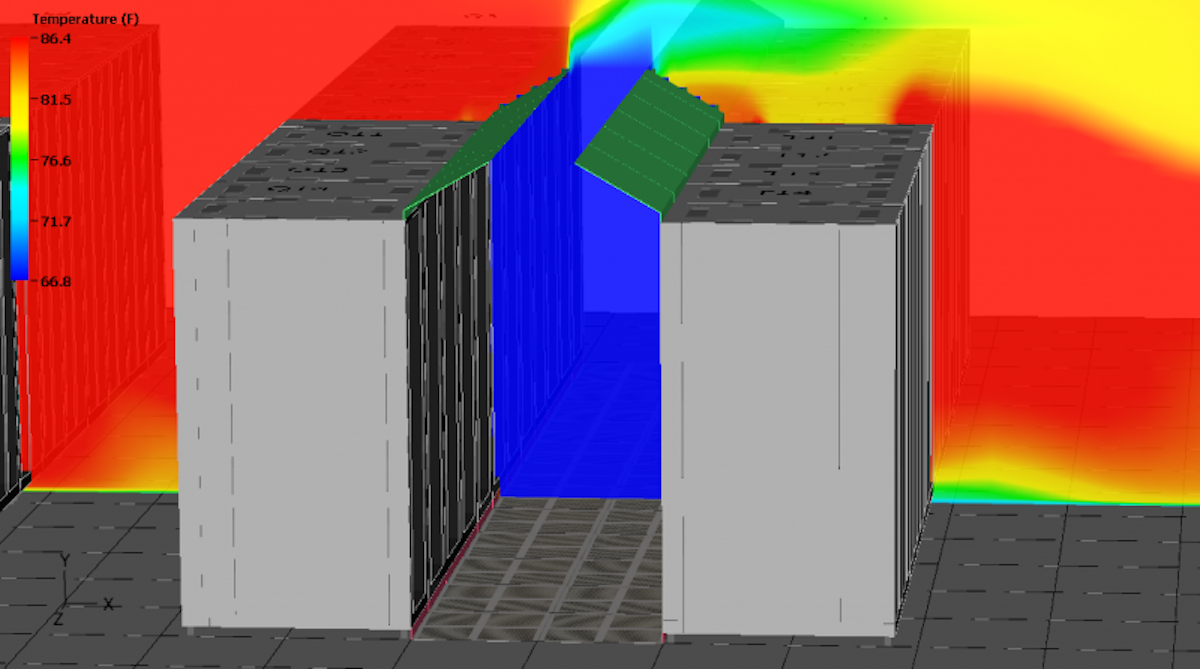Airflow Management Through the Years – Part 2: Introduction of CFD Tools14 min read

This is the 2nd installment of our 3-part series titled: Airflow Management Through the Years. To read the first installment click here.
For those of you who may not know, CFD (computational fluid dynamics) software models air velocity, temperature and pressure variations. So as you could guess, it was just a matter of time before CFD tools made their way into the data center.
As airflow management became an actual subject in the data center world, a generic CFD tool was developed as a data center-specific application, followed shortly by CFD tools which were developed specifically for the data center environment. These tools raised the whole playing field of data center airflow management. First, by demonstrating the counter-productiveness of cabinet top and door mounted fan kits and then arming vendors with a sales tool for demonstrating the efficacy of their various airflow management solutions. CFD users actually contributed to hastening the overall evolution of data center airflow management strategies and tactics by demonstrating at what rack density levels the effectiveness of hot aisle/cold aisle separation started to break down and how various design and practice innovations could compensate for the effects of those higher densities.
One of these early practices for accommodating higher rack densities, clearly illustrated via CFD model simulations, was the use of the space above suspended ceilings as a return air capture space. At this stage of airflow management, the goal was still the elimination of hot spots in conjunction with higher rack densities. Airflow management accessories and design strategies were offered essentially as solutions to thermal problems. However, around the middle of the first decade of this century, a major shift occurred in the focus of airflow management.
In 2005, Oracle and Intel reported on case study projects in which they had deployed server cabinets with vertical exhaust ducts (or chimneys) bridging from the cabinets to a suspended ceiling return air path, thereby completely separating the return air from the rest of the data center. While both studies reported on the effectiveness of the cooling and the opportunity for higher rack density, what was most noteworthy was that they both cited measured evidence of reduced cooling energy costs. Shortly thereafter, Lawrence Berkeley National Labs reported on a June 2006 study at the National Energy Research Scientific Computing Center in Oakland, California. This study included a cold aisle containment experiment resulting in measureable savings on cooling unit fan energy, chiller plant energy at a higher set point, and increased economizer hours. From this point on, the conversation on data center airflow management changed from a primary focus on effectiveness to a focus on efficiency.
During this period, we started to see a small amount of vendors marketing cabinet chimneys, as well as a few adventurous data center operators building their own hot aisle and cold aisle containment structures. While it would be another five to six years before these solutions would be available to the market through a wide range of both traditional data center metal products suppliers and industry new-comers, the stage was being set by several important publications. PG&E’s High Performance Data Centers: A Design Guide Sourcebook in 2006, the EPA report to Congress on data center energy use in 2007, and ASHRAE’s first edition of Best Practices for Datacom Facility Energy Efficiency in 2008 all pointed in the same direction. And that was developing the economic case for using containment aisles or chimney cabinets to maximize the separation of cool and warm air masses in the data center to achieve reduced fan energy, reduced chiller energy, and increased economization.
The industry's easiest to install containment!
AisleLok® solutions are designed to enhance airflow management,
improve cooling efficiency and reduce energy costs.
The industry's easiest to install containment!
AisleLok® solutions are designed to enhance airflow management,
improve cooling efficiency and reduce energy costs.

Ian Seaton
Data Center Consultant
Let's keep in touch!







0 Comments